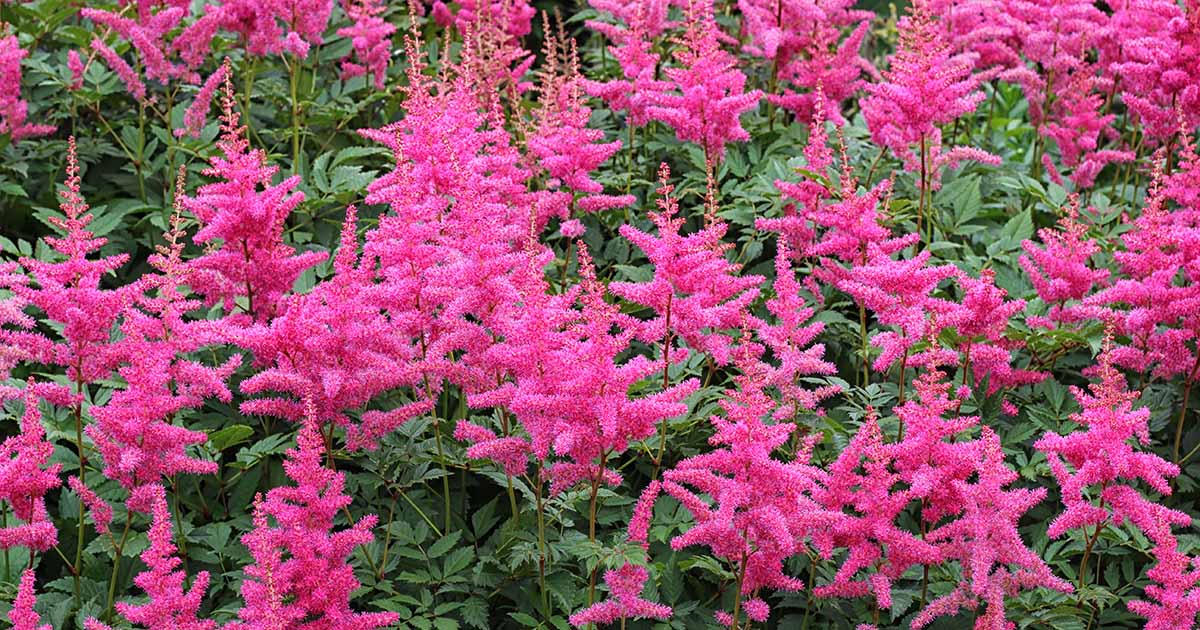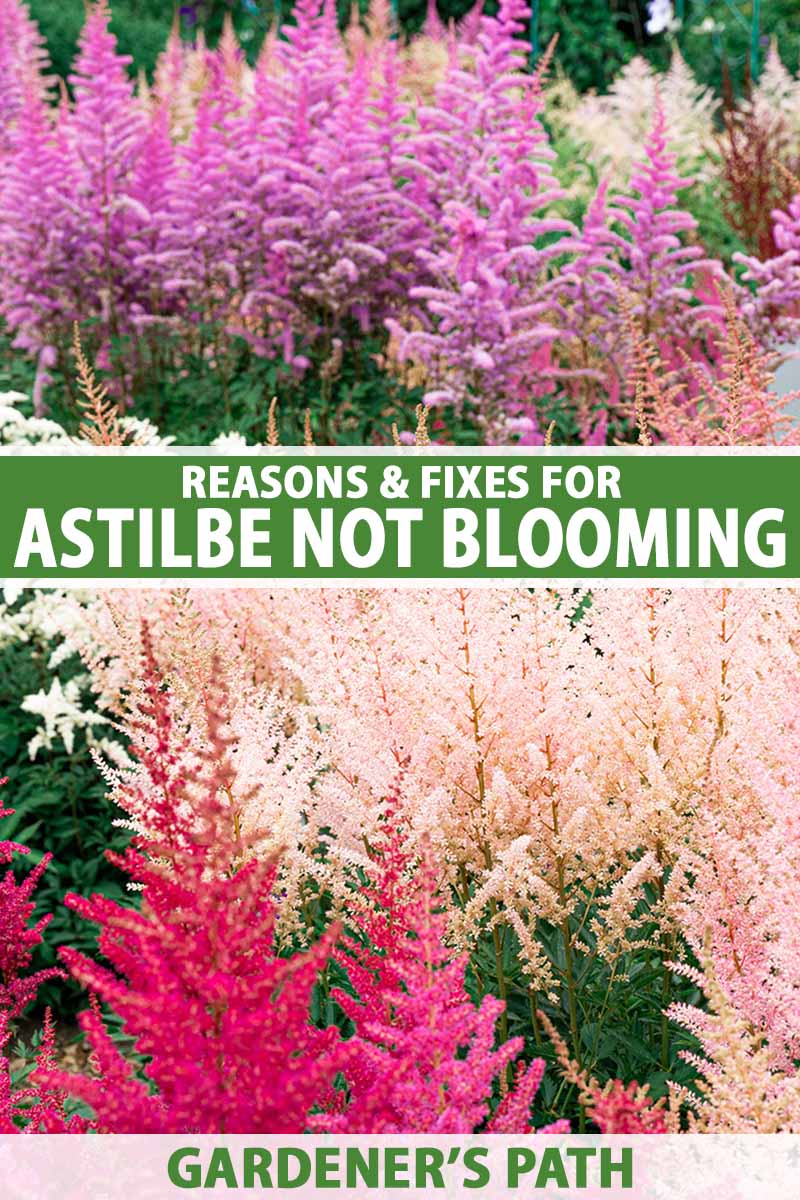A beloved ornamental for the shade garden, astilbe is an herbaceous perennial that produces masses of pretty flowers amid lacy, fern-like foliage.
But if they won’t bloom, you’re missing out on their exceptional showiness!
The Astilbe genus provides beautiful, feathery flowers in colors that include burgundy, coral, cream, lavender, pink, scarlet, violet, and white, flowering from spring to late summer, depending on the variety.
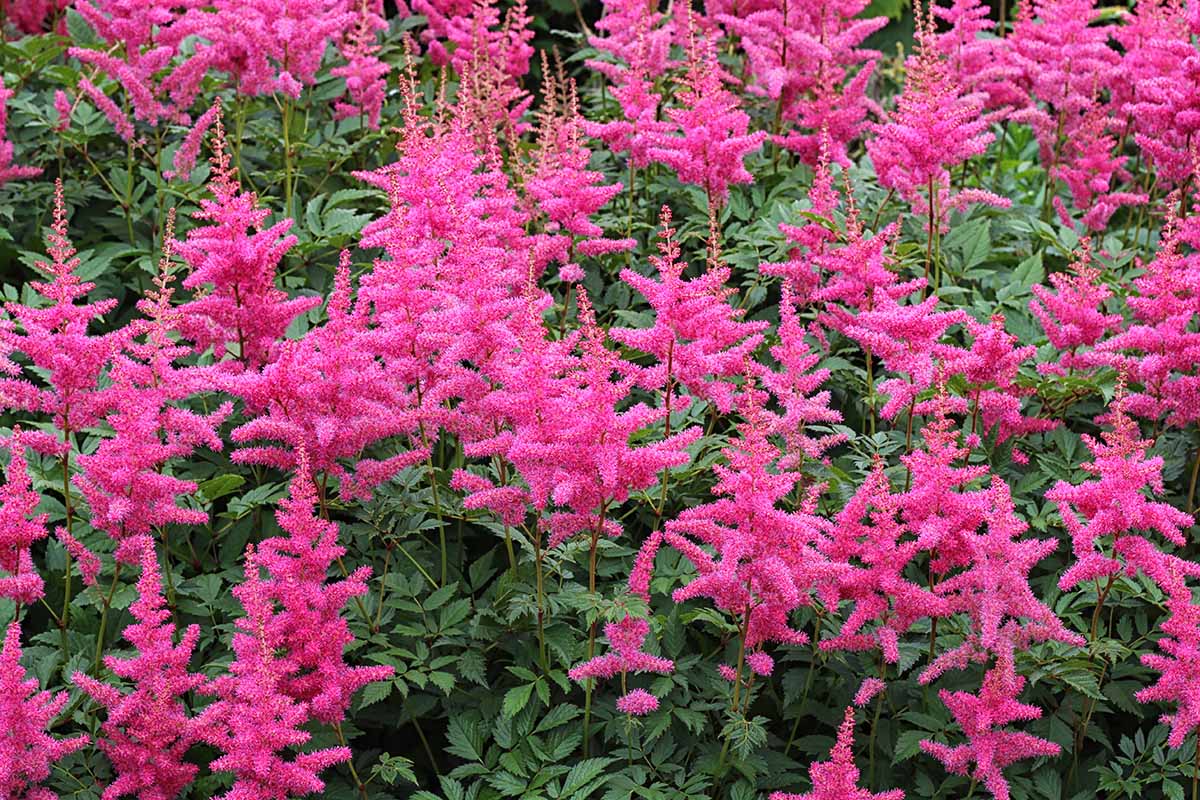

We link to vendors to help you find relevant products. If you buy from one of our links, we may earn a commission.
But if your astilbe plants haven’t bloomed for a while or flower production is declining, it’s usually a result of a few general cultivation errors. Happily, ones that are easily corrected.
Are you ready to learn why your astilbe isn’t blooming and what to do about it? Then let’s dig into the common reasons and how to restore abundant flowering!
Here’s a quick look at what’s ahead:
1. Soil Conditions
Although astilbe plants are generally easy-care perennials that adapt to a variety of soils except clay, they thrive when grown in optimal conditions and put on beautiful shows of emerald to bronzy green foliage with tall, colorful flowers.
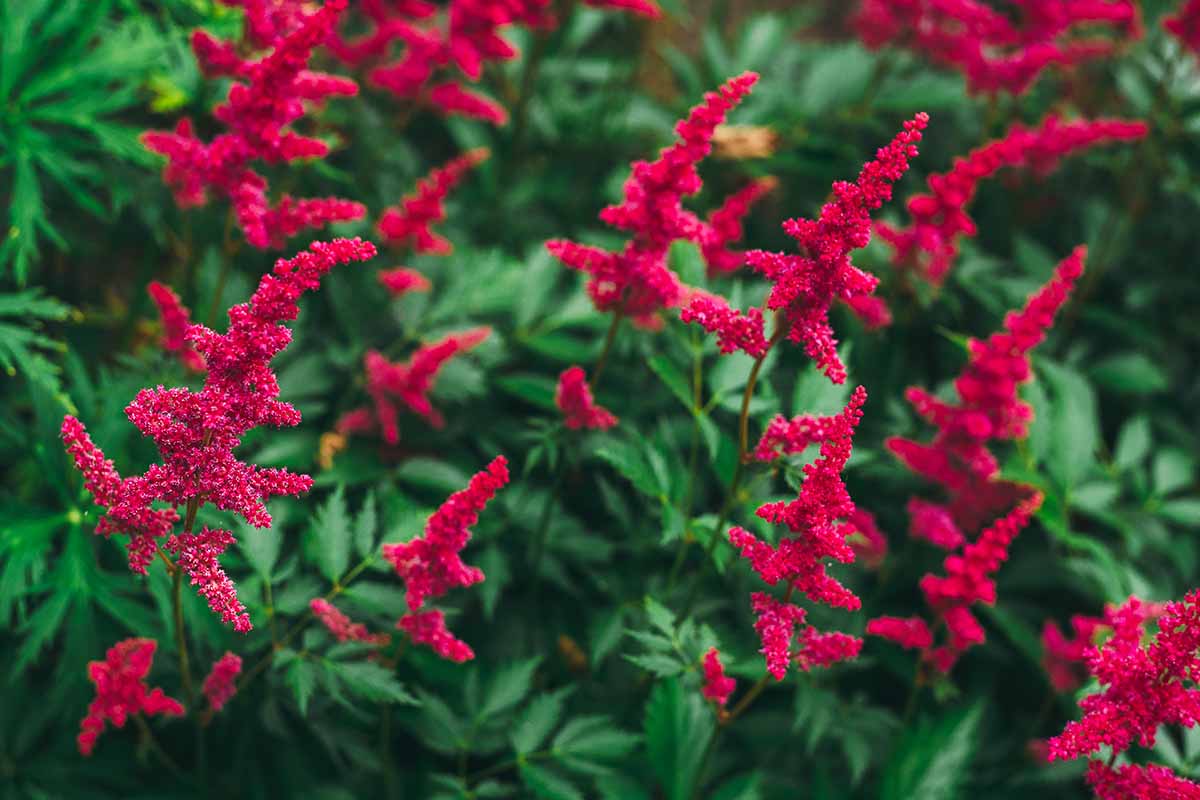

For masses of stately flowers and ample, lush foliage, provide astilbe with cool, moist, and loosely textured soil that’s well-draining, rich in organic matter, and has a slightly acidic pH of 6.0.
Species in the Astilbe genus are heavy feeders and benefit from the addition of organic materials twice a year. More on fertilizing in a bit, so keep reading!
In spring and fall, gently work in generous amounts of compost or well-rotted manure into the soil around the rhizomes.
This helps to condition the soil for a loose and light texture, improves the soil’s nutrient content, and aids in moisture retention.
Also, the soil’s pH can change over time, which can have an adverse effect on flowering.
If you suspect your soil has sweetened to a more alkaline level, you can quickly test it at home with an inexpensive meter, like this 4-in-1 Leaf Luster Rapitest meter, available at Arbico Organics.


4-in-1 Leaf Luster Rapitest Meter
If your soil needs acidifying, lightly work in aluminum sulfate or sulfur dust in early spring, amending the soil a few weeks before adding the spring application of compost.
Sulfur dust can be added to the soil at a rate of a quarter to half a pound per square yard, and aluminum sulfate at the rate of half a pound per square yard.
You may find it helpful to check your soil’s pH each spring to ensure your astilbe plants have the best growing conditions.
2. Moisture Needs
While there are varieties that do well in dry gardens such as Chinese astilbe, A. chinensis, by far the majority of species and cultivars prefer soil that’s consistently moist.
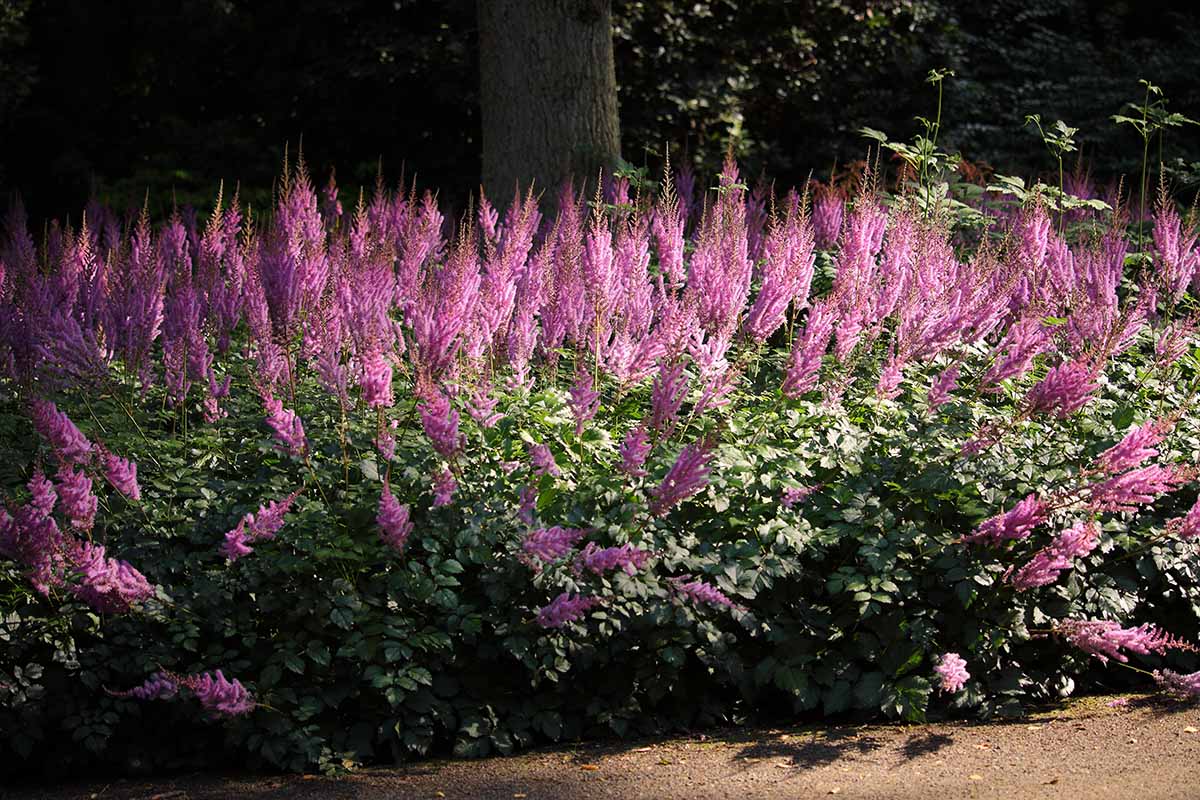

To produce a strong root system and plenty of flowers, water deeply once a week providing about one inch of water, in the absence of rain.
Don’t allow the soil to become bone dry, and in hot conditions, a deep watering twice a week may be needed.
It’s best to avoid frequent, light applications of water which tends to promote shallow, weak roots.
A thick, two-inch layer of mulch can also be helpful for retaining moisture. Use materials such as shredded bark, leafmold, conifer needles, or straw to help retain soil moisture and keep the roots cool – just what they like!
Apply the mulch in spring when you start your watering regime.
And while the plants like moist soil, wet conditions should be avoided and their growing location must be well-draining, especially in winter. The combination of cold temperatures and boggy soil can cause root or rhizome rot.
3. Shade and Sunlight
With a well-earned reputation as a star of the shade garden, astilbe can tolerate moderate amounts of sunlight, and actually gives a better floral display with three to six hours of direct sunshine each day.
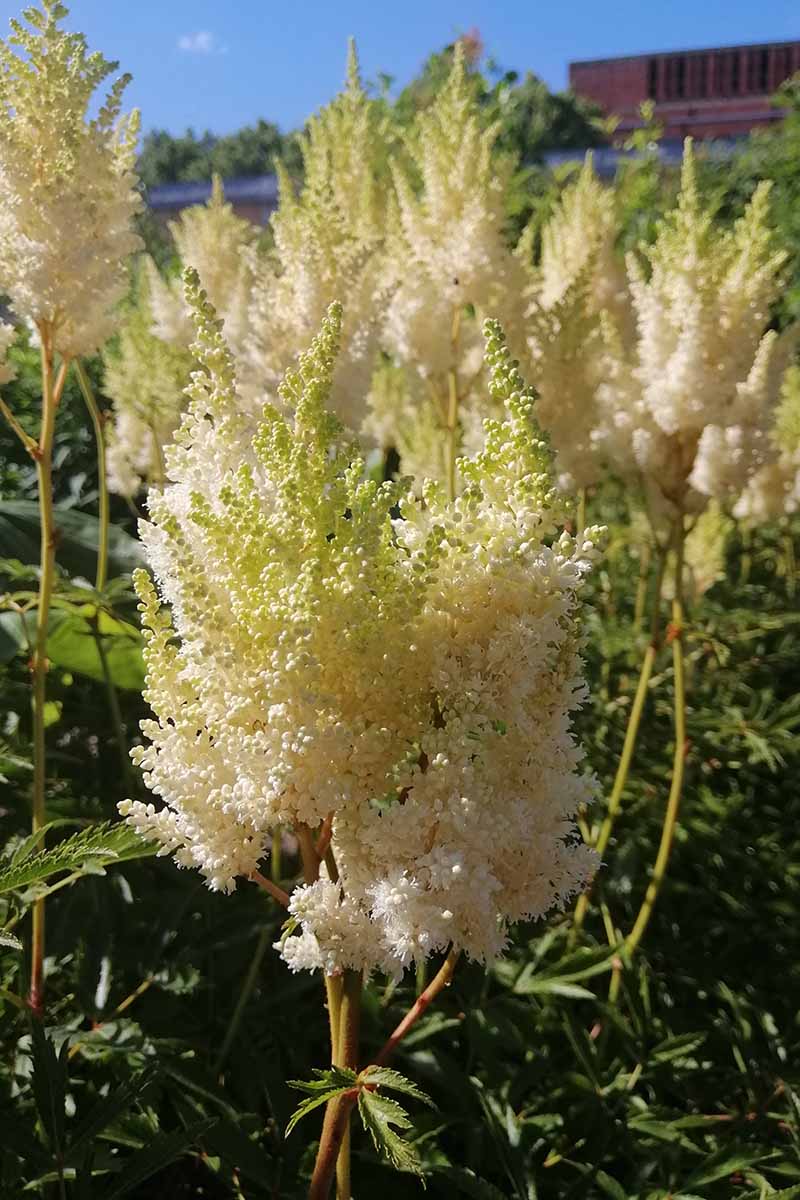

The ideal lighting is for morning sunlight followed by dappled, light, or moderate shade for the rest of the day. But they grow in full shade as well, although the floral display won’t be as impressive.
Wherever they’re planted, hot afternoon sun should be avoided as the heat can hinder growth and cause plants to struggle with bud set.
If you find your plants have sun scorched foliage, droop or wilt in the afternoon, or aren’t setting buds, consider moving them to a shadier locale.
4. Fertilizer Requirements
Plants that produce lots of large flowers, like astilbe, are typically heavy feeders – it takes a lot of food to produce those big blooms.


And one of the most common reasons for astilbe not flowering is inadequate nutrition.
To keep the plants producing plenty of plumes, they’ll appreciate an extra helping or two of fertilizer.
To start the season strong, in spring after new growth is about six inches tall, give your plants a generous, one- to two-inch layer of organically-rich, nutrient dense materials like compost or worm castings.
This can be laid down as a top dressing over the root zone, or it can be gently worked into the soil with a cultivator as a side dressing, taking care not to damage the rhizomes.
After applying the compost, follow up with an application of a slow-release fertilizer.
An all-purpose feed is fine, but for showy clouds of colorful blooms, flowering plants do better with higher phosphorus levels.
Look for fertilizers with phosphorus ratios at least as high as the other numbers – phosphorus is the second number, or the “P,” in the NPK formula.
All-purpose feeds have an even ratio, like 5-5-5 or 10-10-10.
Fertilizers for flowering plants typically have a higher ratio of phosphorus, such as 4-6-4, like this Organic Rose + Bloom food, available from Burpee.
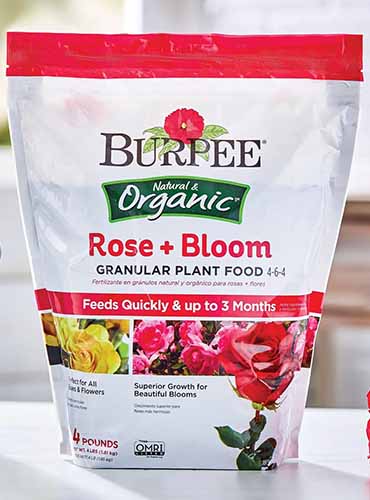

Organic Rose + Bloom Fertilizer
As the growing season winds down, in late summer or early fall, apply another one- to two-inch layer of castings or compost.
This late feeding is beneficial for restoring depleted nutrients and helps strengthen the rhizomes so they can develop ample flower buds for the next growing season.
Also, if you are growing early flowering varieties, they benefit from a fall application of a nitrogen rich fertilizer to promote strong, vigorous growth and healthy bud set – which takes place in early fall.
Nitrogen is the first number, or the “N,” in NPK.
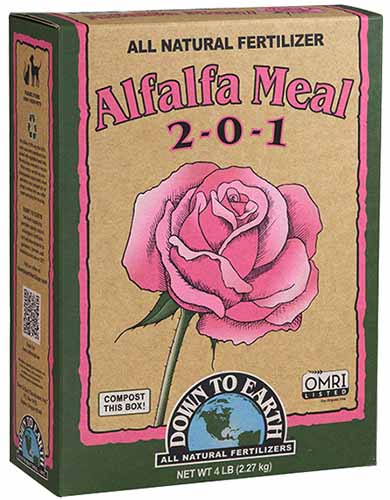

Alfalfa Meal
Alfalfa meal, available at Arbico Organics, is a good nitrogen booster with an NPK of 2-0-1.
And blood meal is very high in nitrogen with an NPK ratio of 12-0-0.
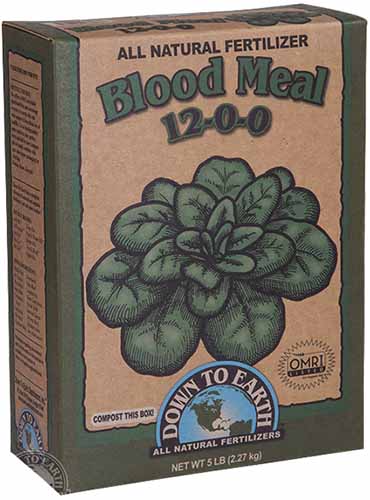

Blood Meal
You can find blood meal also available at Arbico Organics.
For the scoop on all their feeding needs, read up on how to fertilize astilbe in our guide.
5. Maintenance and Winter Care
Aside from the extra feedings outlined above, these herbaceous perennials have few maintenance requirements.
However, a few steps can keep plants healthy over winter for a strong floral display the following year.
Deadheading spent flowers isn’t needed as it doesn’t promote reblooming. And after flowering, the pretty seed heads add fall and winter interest and texture to the garden, plus they’re a good food source for foraging birds.
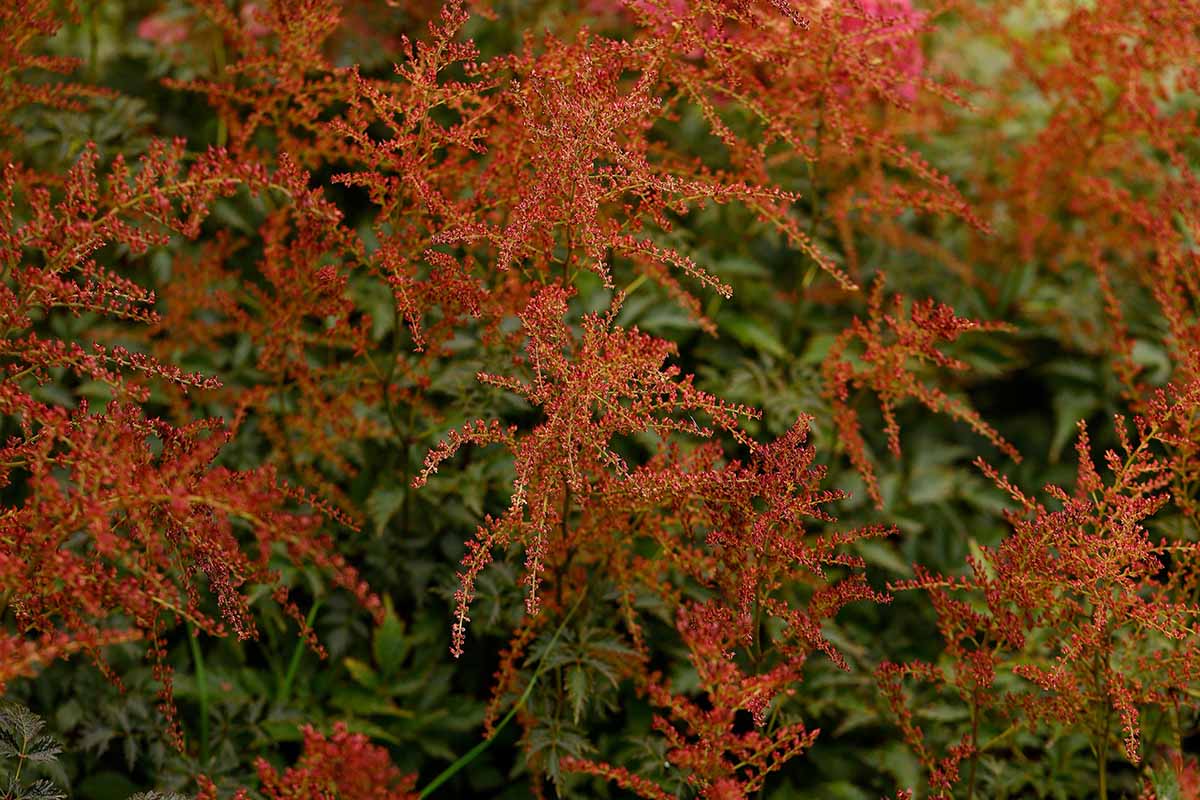

But, if you don’t like the seed head look, you can prepare your plants for cold weather by cutting back the stems to about four inches before winter sets in.
If you do cut them back, be sure to tag their location with a marker before all the foliage disappears so they’re not accidentally disturbed or dug up.
After the first frost, a two-inch layer of winter mulch like compost, shredded leaves, or straw helps to regulate temperatures in the root zone and also prevents heaving crowns from freeze and thaw cycles.
You can learn more about astilbe winter care in our guide.
After new growth emerges in early spring, remove and compost the winter mulch before applying a fresh layer of compost and a spring mulch.
Overcrowding or overgrown clumps can reduce flowering, and astilbe does best when divided regularly – every three to five years, depending on their growth rate.
If you’re new to dividing perennials, check out our guide to propagating astilbe via division for more details.
Big Bold Blooms
When your astilbe struggles to bloom, you can restore their feathery flowers and lush foliage with a few easy fixes.
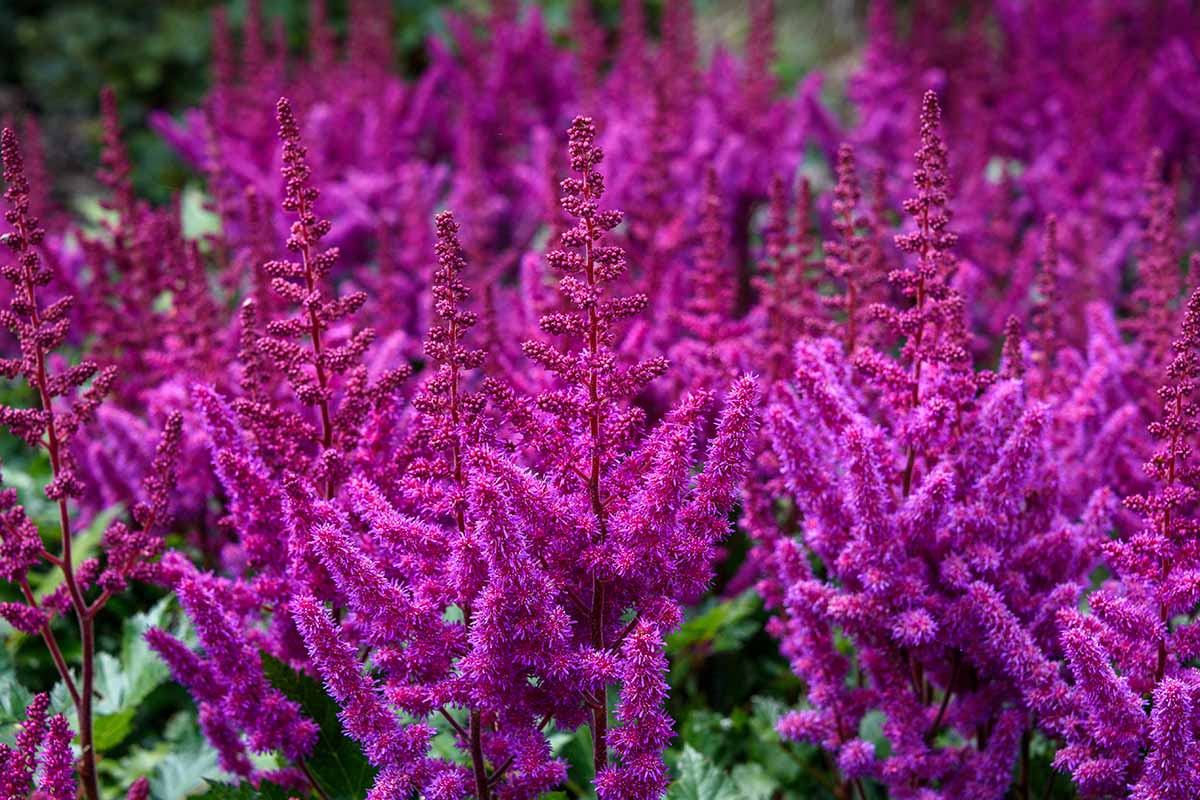

Give them loose, humus rich soil with a touch of acidity in a well-draining location, and be sure to keep the soil moist but not boggy – use mulch to help retain moisture and keep the roots cool.
Apply nutrient dense compost in spring and fall, and feed with a phosphorus-rich fertilizer in spring for big, bold blooms.
Provide them with some morning sun followed by light shade, but keep them well away from hot afternoon UV rays which inhibit flowering.
Meet their feeding, light, and watering needs, and you’ll soon be rewarded with a delightful floral display!
What are your tricks for keeping astilbe flowering? Let us know in the comments section below.
And for more information about growing astilbe, add these guides to your reading list next.

